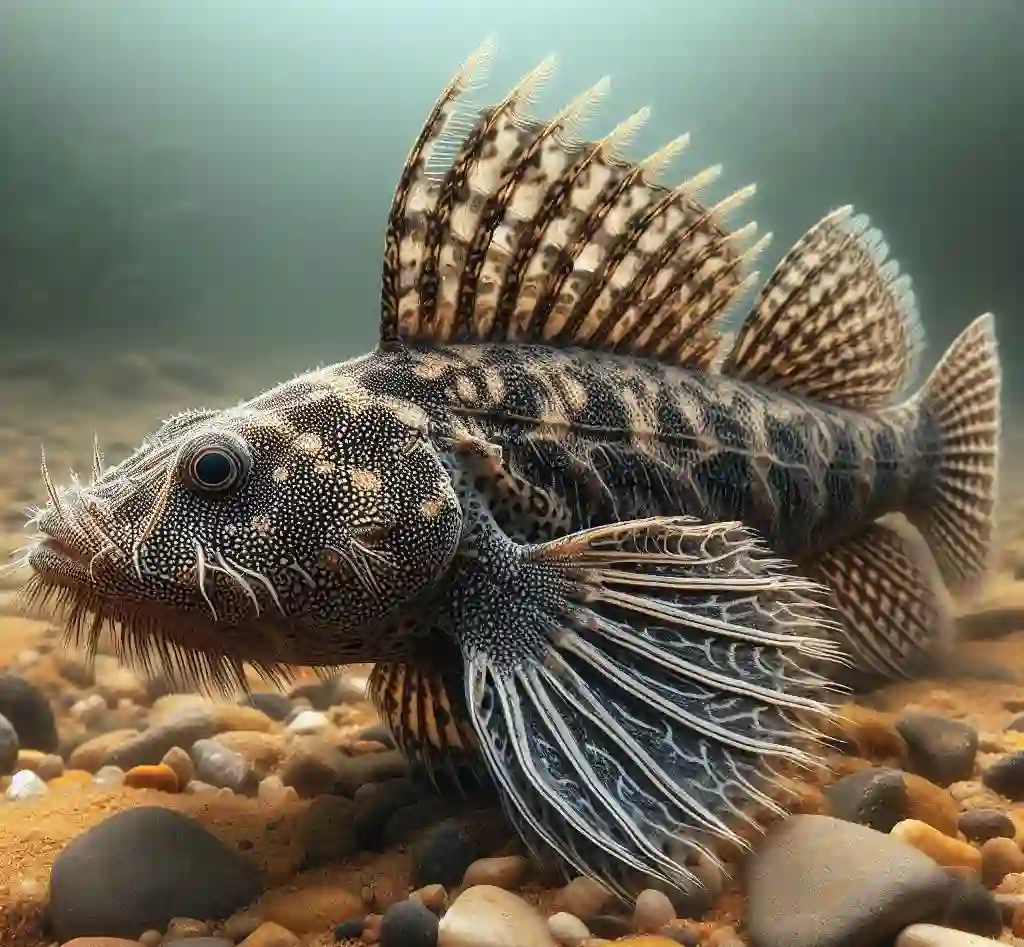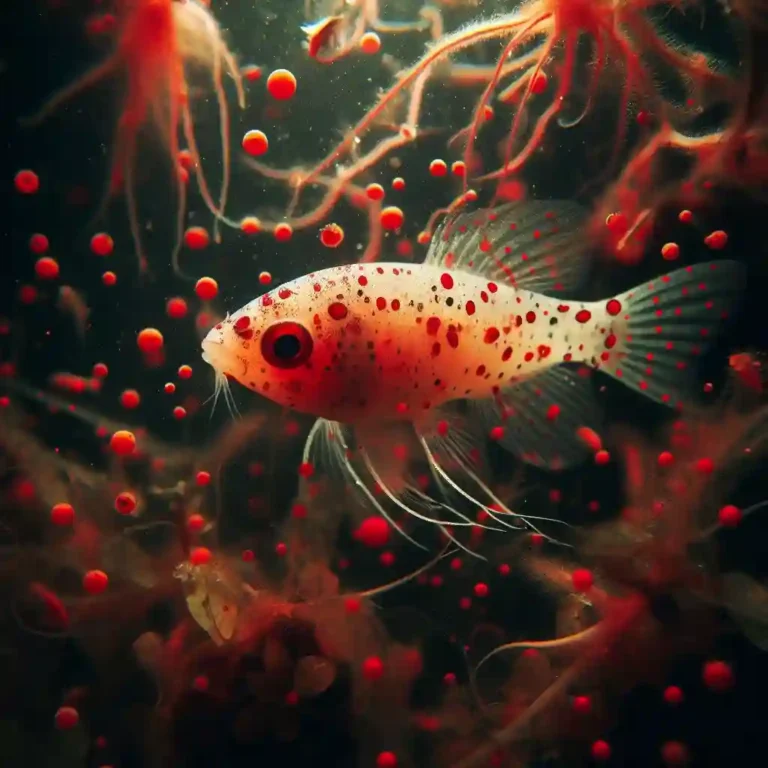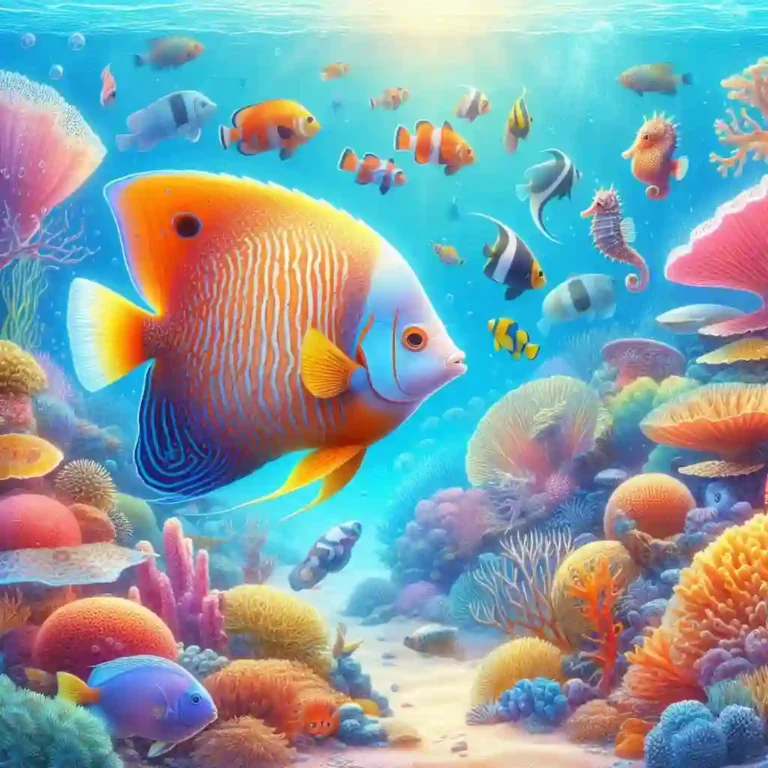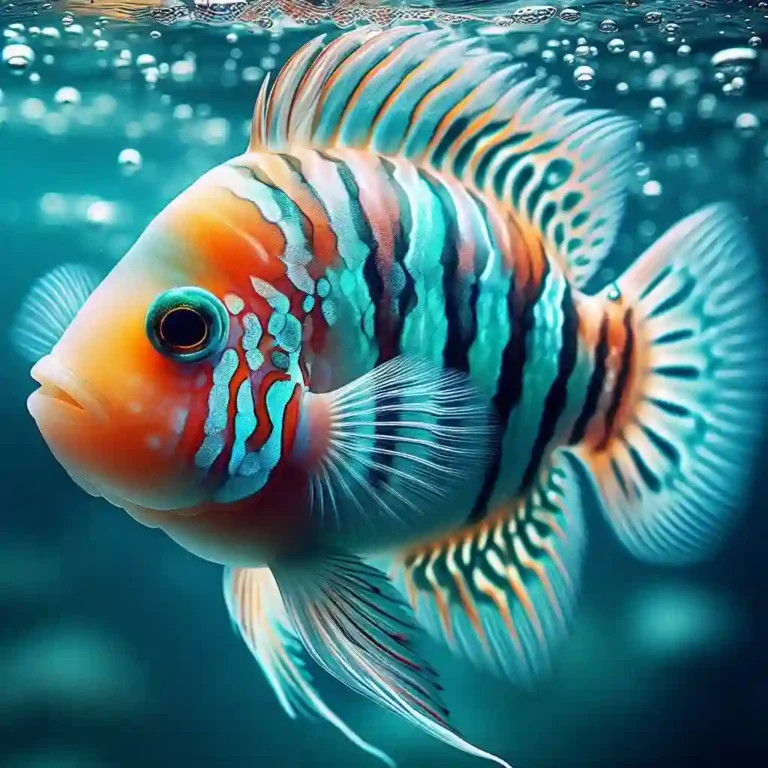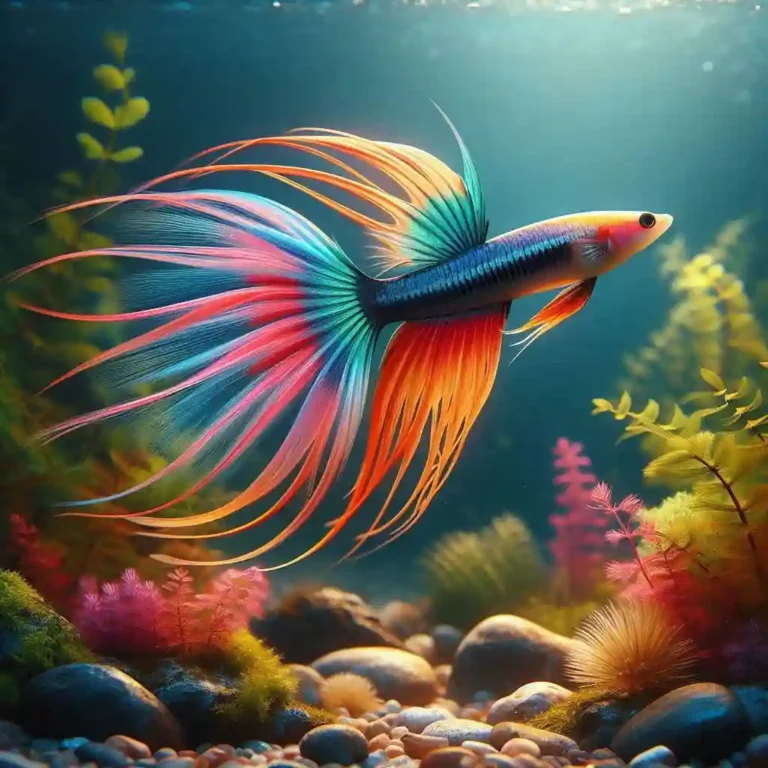Signs Your Pleco Is Dying: How to Identify and Respond
Signs Your Pleco Is Dying: Is your pleco struggling to thrive? As a responsible aquarist, it’s crucial to recognize the warning signs of a dying pleco before it’s too late.
In this guide, we’ll explore the common signs of distress, from subtle changes in behavior to visible injuries, and provide expert advice on how to intervene and save your fish.
Signs Your Pleco Is Dying: A Quick Guide
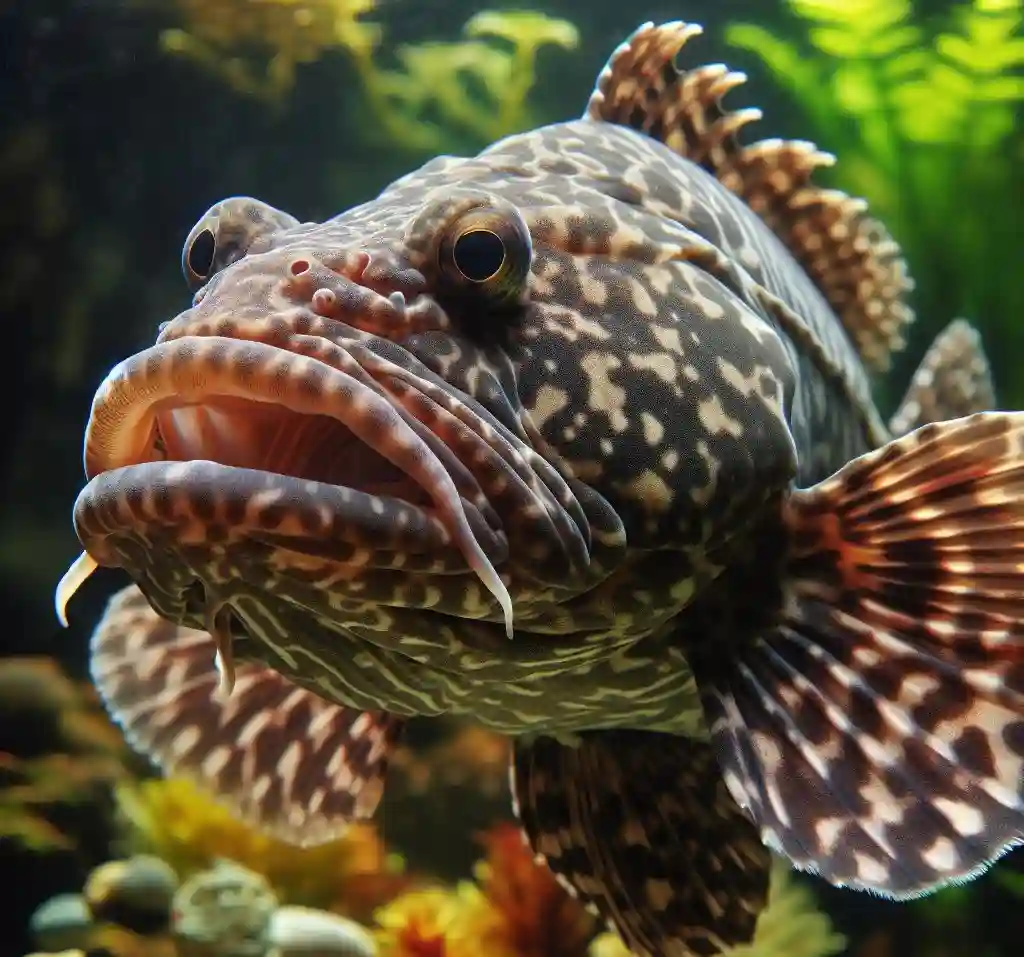
Signs of a Dying Pleco:
- Lethargy: If your pleco is not swimming or moving around, it may be a sign of illness or stress.
- Loss of Appetite: If your pleco is not eating or showing interest in food, it can be a sign of illness or poor water quality.
- Fading Color: A healthy pleco has vibrant colors. If your pleco’s colors are fading, it may be a sign of stress or illness.
- Labored Breathing: If your pleco is having trouble breathing or gasping for air, it’s a sign of poor water quality or illness.
- Fins or Scales Falling Off: If your pleco’s fins or scales are falling off, it may be a sign of stress, illness, or poor water quality.
- Swimming Erratically: If your pleco is swimming erratically or in circles, it may be a sign of stress or illness.
- No Response to Food: If your pleco is not responding to food or is not eating, it may be a sign of illness or poor water quality.
How to Save Your Dying Pleco:
- Check Water Quality: Check your tank’s water quality by testing for ammonia, nitrite, and nitrate levels. Make adjustments as needed to maintain optimal water quality.
- Improve Water Flow: Increase water flow in your tank to reduce stress and improve water circulation.
- Provide a Balanced Diet: Ensure your pleco is receiving a balanced diet with a variety of foods, including algae, vegetables, and protein-rich foods.
- Monitor Temperature: Ensure your tank’s temperature is within the optimal range for your pleco species (usually between 72-82°F).
- Reduce Stress: Reduce stress by providing plenty of hiding places, plants, and decorations in your tank.
- Quarantine: Quarantine your pleco in a separate tank with clean water and a balanced diet to help it recover.
- Consult a Veterinarian: If your pleco is not responding to treatment, consult a veterinarian or experienced aquarist for further guidance.
Additional Tips:
- Regularly clean your tank and replace filter media to maintain optimal water quality.
- Monitor your pleco’s behavior and health regularly to catch any signs of illness or stress early on.
- Research the specific needs of your pleco species to ensure you’re providing the best care possible.
Recognizing the Early Warning Signs of a Dying Pleco
Here are some early warning signs to look out for:
- Changes in Appetite: If your pleco is not eating or showing interest in food, it may be a sign of illness or stress.
- Changes in Swimming Pattern: If your pleco is swimming erratically, swimming in circles, or not swimming at all, it may be a sign of stress or illness.
- Loss of Luster: If your pleco’s scales are dull or lack their usual shine, it may be a sign of stress or illness.
- Fins or Scales Falling Off: If your pleco’s fins or scales are falling off, it may be a sign of stress, illness, or poor water quality.
- Labored Breathing: If your pleco is having trouble breathing or gasping for air, it’s a sign of poor water quality or illness.
- Changes in Color: If your pleco’s colors are fading or changing, it may be a sign of stress or illness.
- Lethargy: If your pleco is not moving or swimming, it may be a sign of illness or stress.
- Increased Shedding: If your pleco is shedding excessively, it may be a sign of stress or illness.
Changes in Your Pleco’s Appearance
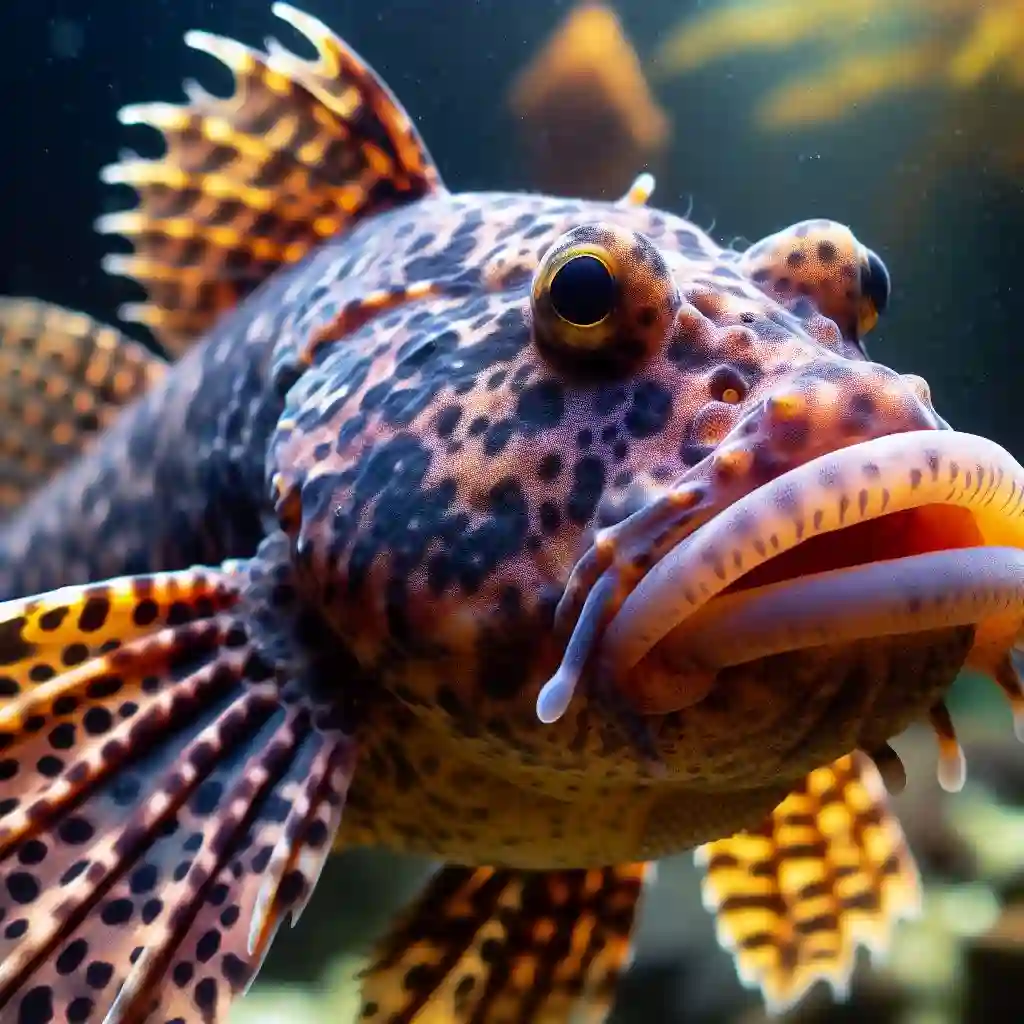
Here are some common changes to look out for:
Changes in Color:
- Fading or dulling of colors
- Discoloration or uneven coloration
- Loss of vibrant colors
Changes in Scales:
- Fins or scales falling off
- Scales becoming dull or rough
- Scales becoming loose or flaking off
Changes in Body Shape:
- Enlarged or swollen body parts (e.g., belly, fins)
- Shrinking or wasting away
- Changes in body shape or posture
Changes in Fins:
- Fins becoming brittle or breaking off
- Fins becoming dull or rough
- Fins becoming tangled or knotted
Changes in Eyes:
- Cloudiness or opacity in the eyes
- Redness or inflammation around the eyes
- Changes in eye shape or size
Changes in Skin:
- Dry, flaky, or scaly skin
- Redness or irritation on the skin
- Changes in skin texture or tone
Changes in Your Pleco’s Swimming Pattern and Activity Level
Here are some common changes to look out for:
Changes in Swimming Pattern:
- Swimming erratically or in circles
- Swimming slowly or lethargically
- Swimming erratically or in zigzags
- Swimming near the surface or near the substrate
- Swimming in a specific pattern or route
Changes in Activity Level:
- Reduced activity or lethargy
- Increased activity or agitation
- Changes in swimming frequency or duration
- Changes in hiding or seeking behavior
How Water Quality and Temperature Affect Your Pleco’s Health
Here’s how they can affect your pleco’s health:
Water Quality:
- Ammonia: High levels of ammonia can be toxic to plecos, causing stress, illness, and even death.
- Nitrite: High levels of nitrite can cause stress, illness, and even death in plecos.
- Nitrate: High levels of nitrate can cause stress and illness in plecos.
- pH: A pH that is too high or too low can cause stress, illness, and even death in plecos.
- Hardness: High levels of hardness can cause stress, illness, and even death in plecos.
- Alkalinity: Low levels of alkalinity can cause stress, illness, and even death in plecos.
Temperature:
- Optimal Temperature Range: Most plecos prefer a temperature range of 72-82°F (22-28°C), but some species may require a different temperature range.
- Temperature Fluctuations: Sudden or extreme temperature fluctuations can cause stress, illness, and even death in plecos.
- Cold Water: Cold water can cause stress, illness, and even death in plecos.
- Hot Water: Hot water can cause stress, illness, and even death in plecos.
How to Maintain Good Water Quality and Temperature:
- Regular Water Changes: Regularly change 10-20% of the tank water to maintain good water quality.
- Monitor Water Parameters: Regularly test the water for ammonia, nitrite, nitrate, pH, and hardness to ensure optimal levels.
- Use a High-Quality Filter: Use a high-quality filter to remove waste products and maintain good water quality.
- Maintain Good Tank Hygiene: Regularly clean the tank and decorations to prevent the buildup of bacteria and debris.
- Monitor Temperature: Use a thermometer to monitor the tank temperature and make adjustments as needed to maintain the optimal temperature range.
How Malnutrition and Overfeeding Can Lead to Pleco Death?
How Malnutrition and Overfeeding Can Lead to Pleco Death:
- Weakened Immune System: Malnutrition and overfeeding can weaken the pleco’s immune system, making them more susceptible to disease.
- Digestive Issues: Malnutrition and overfeeding can lead to digestive issues, such as constipation, diarrhea, and bloating.
- Organ Damage: Malnutrition and overfeeding can cause damage to the pleco’s organs, such as the liver, kidneys, and pancreas.
- Infection: Malnutrition and overfeeding can increase the risk of infection, as the pleco’s immune system is weakened.
- Death: Malnutrition and overfeeding can ultimately lead to the death of the pleco, as the pleco’s body is unable to function properly.
How to Prevent Malnutrition and Overfeeding:
- Provide a Balanced Diet: Ensure your pleco is receiving a balanced diet with a variety of foods, including algae, vegetables, and protein-rich foods.
- Monitor Food Intake: Monitor your pleco’s food intake to ensure they are not overeating.
- Avoid Overfeeding: Avoid overfeeding your pleco, as this can lead to a range of health problems.
- Provide a Variety of Foods: Provide a variety of foods to ensure your pleco is getting the nutrients they need.
- Consult a Veterinarian: If you’re unsure about your pleco’s diet or health, consult a veterinarian or experienced aquarist for guidance.
Identifying and Treating Common Diseases and Infections in Plecos
Common Diseases and Infections:
- Bacterial Infections: Bacterial infections are common in plecos and can be caused by poor water quality, inadequate diet, or stress.
- Fungal Infections: Fungal infections are less common but can occur in plecos, especially in areas with high humidity and poor water quality.
- Parasitic Infections: Parasitic infections, such as worms and protozoa, can affect plecos and are often transmitted through contaminated food or water.
- Viral Infections: Viral infections are rare in plecos but can occur in areas with poor water quality or inadequate diet.
- Fungal Infections: Fungal infections can occur in plecos, especially in areas with high humidity and poor water quality.
Symptoms of Common Diseases and Infections:
- Bacterial Infections: Symptoms may include labored breathing, lethargy, and changes in appetite.
- Fungal Infections: Symptoms may include changes in skin color, lesions, and fungal growths.
- Parasitic Infections: Symptoms may include changes in appetite, lethargy, and visible parasites on the skin or in the feces.
- Viral Infections: Symptoms may include lethargy, changes in appetite, and visible signs of illness.
- Fungal Infections: Symptoms may include changes in skin color, lesions, and fungal growths.
Treating Common Diseases and Infections:
- Bacterial Infections: Treat with antibiotics, such as amoxicillin or tetracycline, under the guidance of a veterinarian.
- Fungal Infections: Treat with antifungal medications, such as fluconazole or itraconazole, under the guidance of a veterinarian.
- Parasitic Infections: Treat with antiparasitic medications, such as praziquantel or fenbendazole, under the guidance of a veterinarian.
- Viral Infections: Treat with antiviral medications, such as acyclovir or valacyclovir, under the guidance of a veterinarian.
- Fungal Infections: Treat with antifungal medications, such as fluconazole or itraconazole, under the guidance of a veterinarian.
How to Recognize and Treat Parasites and Worms in Pleco
Recognizing Parasites and Worms:
- Visible Worms: Look for visible worms or parasites on the pleco’s skin, fins, or body.
- Changes in Appetite: Monitor your pleco’s appetite and behavior. A decrease in appetite or lethargy can be a sign of parasitism.
- Changes in Skin: Observe any changes in skin color, texture, or lesions.
- Feces: Check the feces for worms or parasites.
- Lab Tests: Perform lab tests, such as fecal exams or blood tests, to detect parasites or worms.
Common Parasites and Worms:
- Monogeneans: These are external parasites that attach to the pleco’s skin and fins.
- Cestodes: These are internal parasites that live in the pleco’s digestive tract.
- Nematodes: These are internal parasites that live in the pleco’s digestive tract.
- Trematodes: These are internal parasites that live in the pleco’s digestive tract.
Treating Parasites and Worms:
- Medications: Use antiparasitic medications, such as praziquantel or fenbendazole, under the guidance of a veterinarian.
- Environmental Changes: Make environmental changes, such as adjusting water temperature or pH, to create an unfavorable environment for parasites.
- Quarantine: Quarantine the affected pleco to prevent the spread of parasites to other fish.
- Frequent Water Changes: Perform frequent water changes to reduce the parasite’s life cycle.
- Monitor and Treat: Monitor the pleco’s health and treat any signs of parasitism promptly.
How Overcrowding and Environmental Stress Can Contribute to Pleco Death
Overcrowding:
- Reduced Water Quality: Overcrowding can lead to reduced water quality, as the increased number of fish can lead to increased waste production and decreased water circulation.
- Increased Stress: Overcrowding can lead to increased stress levels in the plecos, which can weaken their immune system and make them more susceptible to disease.
- Competition for Food: Overcrowding can lead to competition for food among the plecos, which can lead to malnutrition and starvation.
- Increased Risk of Disease: Overcrowding can increase the risk of disease transmission among the plecos, as they are more likely to come into contact with each other and potentially transmit diseases.
Environmental Stress:
- Changes in Water Temperature: Changes in water temperature can be stressful for plecos, especially if they are not adapted to the new temperature.
- Changes in Water pH: Changes in water pH can be stressful for plecos, especially if they are not adapted to the new pH level.
- Changes in Water Hardness: Changes in water hardness can be stressful for plecos, especially if they are not adapted to the new hardness level.
- Lack of Hiding Places: A lack of hiding places can be stressful for plecos, as they may feel vulnerable and exposed.
- Lack of Visual Barriers: A lack of visual barriers can be stressful for plecos, as they may feel exposed and vulnerable.
How to Prevent Overcrowding and Environmental Stress:
- Provide Adequate Space: Provide adequate space for your plecos to swim and move around comfortably.
- Maintain Good Water Quality: Maintain good water quality by performing regular water changes and monitoring water parameters.
- Provide Adequate Hiding Places: Provide adequate hiding places for your plecos to feel secure and reduce stress.
- Provide Adequate Visual Barriers: Provide adequate visual barriers for your plecos to feel secure and reduce stress.
- Monitor Water Parameters: Monitor water parameters, such as temperature, pH, and hardness, to ensure they are within a comfortable range for your plecos.
- Avoid Overfeeding: Avoid overfeeding your plecos, as this can lead to poor water quality and increased stress.
- Monitor for Disease: Monitor your plecos for signs of disease and take action promptly if you notice any signs of illness.
How to Save Your Dying Pleco and Prevent Future Decline
Immediate Action:
- Quarantine: Quarantine your pleco in a separate tank to prevent the spread of disease to other fish.
- Monitor Water Quality: Monitor water quality and make adjustments as needed to ensure optimal water parameters.
- Provide Adequate Food: Provide adequate food and ensure your pleco is eating properly.
- Monitor for Disease: Monitor your pleco for signs of disease and take action promptly if you notice any signs of illness.
- Consult a Veterinarian: Consult a veterinarian or experienced aquarist for guidance on how to care for your pleco.
Long-Term Prevention:
- Maintain Good Water Quality: Regularly test and maintain good water quality to prevent disease and stress.
- Provide Adequate Food: Ensure your pleco is receiving a balanced diet and adequate food.
- Monitor for Disease: Regularly monitor your pleco for signs of disease and take action promptly if you notice any signs of illness.
- Provide Adequate Space: Provide adequate space for your pleco to swim and move around comfortably.
- Avoid Overcrowding: Avoid overcrowding your tank to prevent stress and disease.
- Monitor Water Parameters: Monitor water parameters, such as temperature, pH, and hardness, to ensure they are within a comfortable range for your pleco.
- Consult a Veterinarian: Consult a veterinarian or experienced aquarist for guidance on how to care for your pleco.
How to Keep Your Pleco Healthy and Thriving in the Long Term
Proper Care:
- Proper Water Quality: Maintain good water quality by performing regular water changes and monitoring water parameters.
- Proper Diet: Provide a balanced diet that meets your pleco’s nutritional needs.
- Proper Environment: Provide a suitable environment that meets your pleco’s needs, including adequate space, hiding places, and visual barriers.
- Regular Maintenance: Regularly clean and maintain your tank to prevent the buildup of debris and waste.
Attention to Detail:
- Monitor Water Parameters: Monitor water parameters, such as temperature, pH, and hardness, to ensure they are within a comfortable range for your pleco.
- Monitor for Disease: Monitor your pleco for signs of disease and take action promptly if you notice any signs of illness.
- Monitor for Parasites: Monitor your pleco for signs of parasites and take action promptly if you notice any signs of infestation.
- Monitor for Stress: Monitor your pleco for signs of stress and take action promptly if you notice any signs of stress.
Long-Term Commitment:
- Commit to Long-Term Care: Commit to providing long-term care for your pleco, including regular maintenance and monitoring.
- Be Patient: Be patient and understanding that your pleco may require time to adjust to its new environment.
- Be Proactive: Be proactive in addressing any issues that arise and take action promptly to prevent problems from escalating.
- Seek Professional Advice: Seek professional advice from a veterinarian or experienced aquarist if you have any concerns about your pleco’s health or well-being.
FAQs
Q: Can plecos be kept in aquariums with other fish?
A: Yes, plecos can be kept in aquariums with other fish, but it’s important to choose tankmates that are compatible with their size and temperament.
Q: Can plecos be kept in aquariums with other invertebrates?
A: Yes, plecos can be kept in aquariums with other invertebrates, but it’s important to choose tankmates that are compatible with their size and swimming needs.
Q: Can plecos be kept in aquariums with other crustaceans?
A: Yes, plecos can be kept in aquariums with other crustaceans, but it’s important to choose tankmates that are compatible with their size and swimming needs.
Q: Can plecos be kept in aquariums with other mollusks?
A: Yes, plecos can be kept in aquariums with other mollusks, but it’s important to choose tankmates that are compatible with their size and swimming needs.
Q: Can plecos be kept in aquariums with other echinoderms?
A: Yes, plecos can be kept in aquariums with other echinoderms, but it’s important to choose tankmates that are compatible with their size and swimming needs.
Q: Can plecos be kept in aquariums with other fish?
A: Yes, plecos can be kept in aquariums with other fish, but it’s important to choose tankmates that are compatible with their size and temperament.
Q: Can plecos be kept in aquariums with other invertebrates?
A: Yes, plecos can be kept in aquariums with other invertebrates, but it’s important to choose tankmates that are compatible with their size and swimming needs.
Q: Can plecos be kept in aquariums with other crustaceans?
A: Yes, plecos can be kept in aquariums with other crustaceans, but it’s important to choose tankmates that are compatible with their size and swimming needs.
Q: Can plecos be kept in aquariums with other mollusks?
A: Yes, plecos can be kept in aquariums with other mollusks, but it’s important to choose tankmates that are compatible with their size and swimming needs.
Q: Can plecos be kept in aquariums with other echinoderms?
A: Yes, plecos can be kept in aquariums with other echinoderms, but it’s important to choose tankmates that are compatible with their size and swimming needs.
Q: Can plecos be kept in aquariums with other fish?
A: Yes, plecos can be kept in aquariums with other fish, but it’s important to choose tankmates that are compatible with their size and temperament.
Q: Can plecos be kept in aquariums with other invertebrates?
A: Yes, plecos can be kept in aquariums with other invertebrates, but it’s important to choose tankmates that are compatible with their size and swimming needs.
Q: Can plecos be kept in aquariums with other crustaceans?
A: Yes, plecos can be kept in aquariums with other crustaceans, but it’s important to choose tankmates that are compatible with their size and swimming needs.

Hello, I’m Aria Cooper, the heart and soul behind Swimmy Buddies. As a devoted fish aficionado, I share my aquatic adventures and expertise to inspire your own underwater explorations. 🐠🌊

